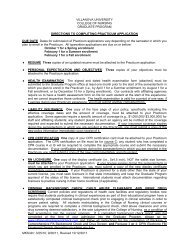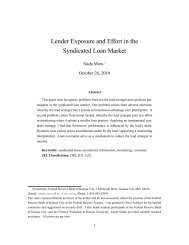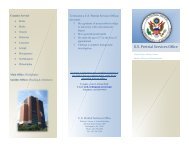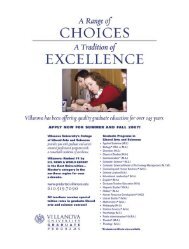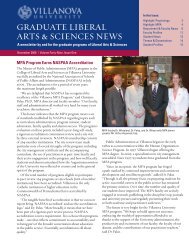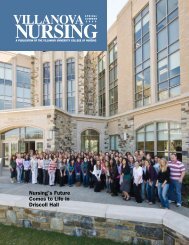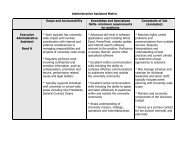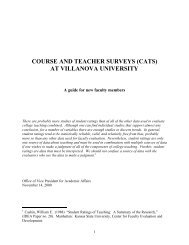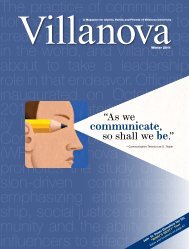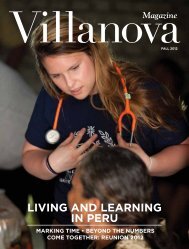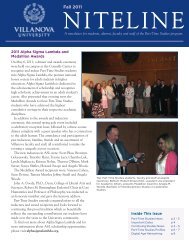“…each generation of Villanova graduates has released its own ...
“…each generation of Villanova graduates has released its own ...
“…each generation of Villanova graduates has released its own ...
You also want an ePaper? Increase the reach of your titles
YUMPU automatically turns print PDFs into web optimized ePapers that Google loves.
Naval Engineers Convene on Campus to<br />
Chart the Course for Intelligent Ships<br />
“This is an era <strong>of</strong> unprecedented<br />
excitement and challenge for the<br />
naval engineering community....<br />
Seabasing and homeland defense<br />
concepts will require transformational<br />
capabilities to enable naval forces<br />
and the Coast Guard to respond<br />
to new threats and situations here<br />
at home and around the globe....<br />
Unmanned vehicles, the ultimate<br />
intelligent ship, will continue to take<br />
on more roles to keep sailors out <strong>of</strong><br />
harm’s way...At the heart <strong>of</strong> it all,<br />
however, one thing <strong>has</strong> not changed.<br />
The men and women who operate<br />
and maintain our ships and systems<br />
are the single greatest asset in our<br />
Navy. People make it happen.”<br />
— from the American Society<br />
<strong>of</strong> Naval Engineers’<br />
promotional materials for the<br />
Intelligent Ships Symposium VI.<br />
BY IRENE BURGO<br />
As part <strong>of</strong> <strong>its</strong> 100th anniversary commemoration<br />
this year, the College<br />
<strong>of</strong> Engineering hosted the American<br />
Society <strong>of</strong> Naval Engineers (ASNE)<br />
Intelligent Ships Symposium VI on June<br />
1-2. It drew to <strong>Villanova</strong> University<br />
military experts, scholars and civilian<br />
pr<strong>of</strong>essionals from across the country who<br />
addressed the varied issues <strong>of</strong> technologically<br />
sophisticated naval engineering.<br />
“<strong>Villanova</strong> was selected as host <strong>of</strong><br />
this event because <strong>of</strong> significant synergies<br />
with naval engineering including<br />
their active naval research programs,<br />
ROTC program, and intern programs,”<br />
according to the ASNE.<br />
The symposium took place in the Jake<br />
Nevin Field House and the Connelly<br />
Center. Numerous vendors displayed<br />
the latest state-<strong>of</strong>-the-art research<br />
technologies used by the Navy.<br />
In the opening ceremony, the<br />
Rev. Edmund J. Dobbin, O.S.A., ’58,<br />
University president, welcomed participants<br />
to <strong>Villanova</strong>. Navy Capt.<br />
Rick Hepburn (Ret.), president-elect <strong>of</strong><br />
ASNE, delivered the opening remarks.<br />
The keynote address, by Navy Rear<br />
Adm. Gerard M. Mauer Jr. ’76 C&F,<br />
focused on how high technology is transforming<br />
today’s Navy fleet into virtually<br />
“intelligent ships.” This new fleet is<br />
expected to have superior task capabilities<br />
and reduced manpower to achieve cost<br />
savings, Mauer said. He is deputy assistant<br />
chief <strong>of</strong> staff, Joint Experimentation,<br />
Exercises and Assessment, Allied<br />
Command Transformation.<br />
18 <strong>Villanova</strong> Magazine



